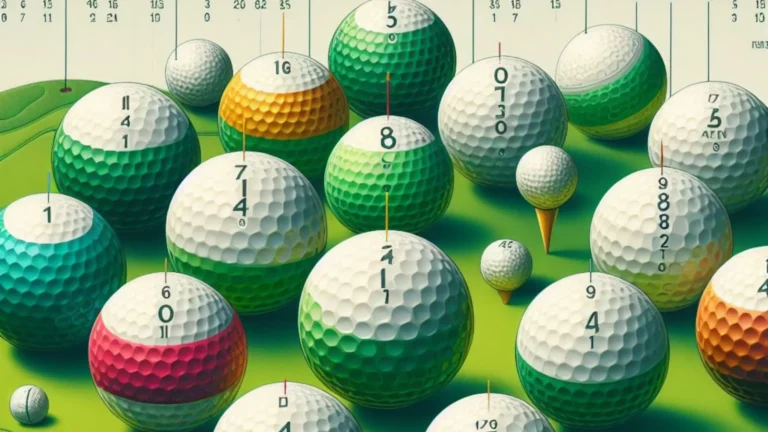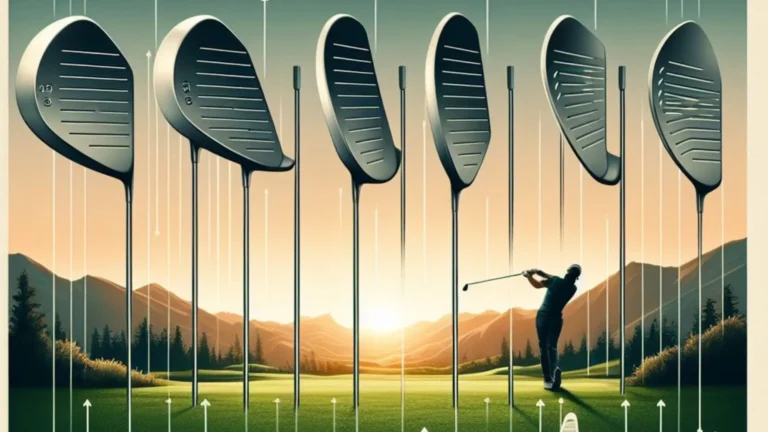The Importance of Understanding Golf Club Lofts and Degrees
When learning to play golf, one of the most important concepts to understand is golf club lofts and degrees. The loft, or angle of the clubface, has a significant impact on the trajectory, distance, and spin of every golf shot. Knowing your clubs’ loft degrees and how they differ by club type can help players better understand their yardages and ball flights.
Players can improve their game by learning about standard golf club lofts and using a golf club degrees chart. This article will provide an overview of club loft, explain a golf club degrees chart, and explain why understanding loft is critical for on-course success.
The loft is the angle of the golf club face relative to the shaft. Loft generates backspin and lift upon impact, resulting in high-launching shots. The higher the degree of loft, the more trajectory and spin are generated. Less lofty clubs, such as drivers, launch the ball lower with less spin for maximum distance, whereas highly lofted wedges provide tremendous backspin to quickly stop the ball on the green.
Golf club loft is important because it directly affects shot distances and ball flight laws. That’s why understanding the degrees of each club type is critical.
Most golf club loft measurements will include both a number and the term “degrees”. Consider a 9-degree driver or a 56-degree wedge. This refers to the angle between the clubface and the vertical plane at address.
The big the loft, the more vertical the clubface will be. Most players have a set of clubs that starts with low lofts in the woods and hybrids and progresses through the irons to the highly lofted wedges and lob wedge. Understanding where each club falls on the loft spectrum is the first step toward using a golf club degrees chart effectively.
Iron Loft Degrees Breakdown
The standard iron set includes clubs ranging from 3-iron to pitching wedge. Traditional lofts include the following:
3-iron: 21 degrees.
4 iron: 24 degrees.
5-iron: 27 degrees.
6-iron, 30 degrees.
7-iron, 34 degrees.
8-iron: 38 degrees.
9-iron: 42 degrees.
Pitching wedge: 46 degrees.
The loft degrees increase in proportion to the iron numbers. This allows players to hit each successive iron shot at a specific yardage based on the loft’s launch, trajectory, and spin. A 3-iron launches low with little spin to gain distance, whereas a pitching wedge launches very high with plenty of spin to hold greens.
Understanding these degree gaps assists players in determining the appropriate iron selection based on the distance of a shot. Most players have 3-4 degree gaps between each iron, with the pitching wedge providing an extra 4 degrees of height on approach shots.
Hybrids and Fairway Woods Loft Degrees
Hybrids and fairway woods bridge the gap between a player’s low iron and driver. They use moderate lofts to launch shots high enough to hit greens but low enough to provide distance. Standard lofts are:
3-wood: 15 degrees.
5-wood: 18°
7-wood: 21°
3-hybrid: 19°
4-Hybrid: 22 degrees.
5-Hybrid: 25 degrees.
Fairway woods have lofts that are very close to corresponding iron numbers, which allows them to replace long irons in many golf bags today. Fairway woods and hybrids have higher launch and spin, providing more carry and control than traditional low-lofted iron shots.
Understanding these club degrees is critical for selecting the best option off the tee, from the fairway, or for completing par 5s in two. To achieve consistent distance gaps, most players leave 3 degrees between each club.
Wedge Loft Degrees Overview.
Wedges are essential scoring clubs that are designed to launch shots high and with spin, allowing players to attack pins close to greens. The four major wedges are:
Pitching wedge: 46 degrees.
Gap wedge: 50 to 53 degrees.
Sand wedge: 54-56 degrees.
Lob wedge: 58-60 degrees.
Pitching wedges launch the lowest as a well-rounded option, whereas lob wedges have the most loft for playing specialized shots. Gap wedges bridge the yardage gap between the pitching wedge and the sand wedge. Sand wedges have extra bounce to get through bunkers and enough loft to launch from any lie.
Lob wedges enable players to attack tucked-away hole locations by hitting extremely high shots with immense spin. Understanding golf club degrees is essential for managing wedge distance control, as each loft plays a unique role in a complete short game arsenal. To avoid redundancy in yardages, most players leave 4-6 degree gaps between wedges.
Understanding Driver Lofts
The driver is the lowest lofted club, intended solely for maximum distance off the tee. Modern drivers have advanced construction features, making extremely low lofts more forgiving and playable than ever before. The standard driver lofts are now:
Low-launch driver (8-9.5 degrees)
Mid-launch driver: 10 to 10.5 degrees.
High launch driver: 11-12 degrees.
Swing characteristics and desired ball flight are important considerations when selecting the right launch driver. Players who struggle with high spin misses from the tee should use lower loft drivers to reduce spin and increase carry. Mid-launch models appeal to a wide range of players, from beginners to tour players, due to their versatility in launch and spin.
High-launch drivers enable slower swing speed players to achieve height and distance even with the driver. Finding the right driver loft allows you to maximize your tee shot, which is essential for properly setting up approach shots.
Conclusion
In golf, finding every distance and shot-making advantage possible is critical to scoring. Understanding golf club lofts using a golf club degrees chart enables players to make more informed decisions about clubs based on yardages and desired ball flight. When selecting the right iron, fairway wood, wedge, or driver, matching the club loft to swing characteristics improves results.
By learning the degrees of each club type, players can improve their shot patterns, lower their scores, and maximize their success on the course in the long run. Improving club selection through smart loft decisions is an important step towards golf mastery.







